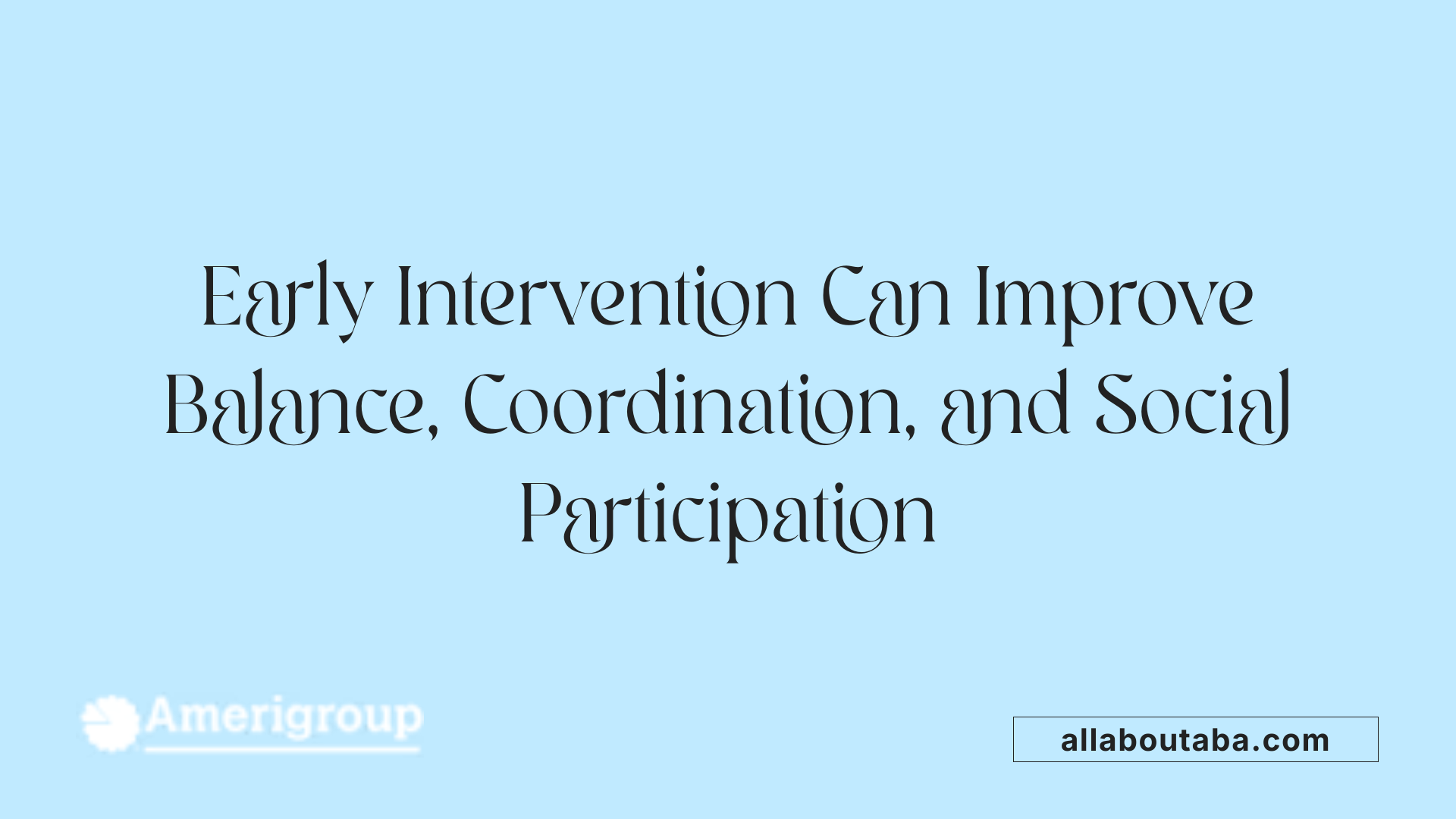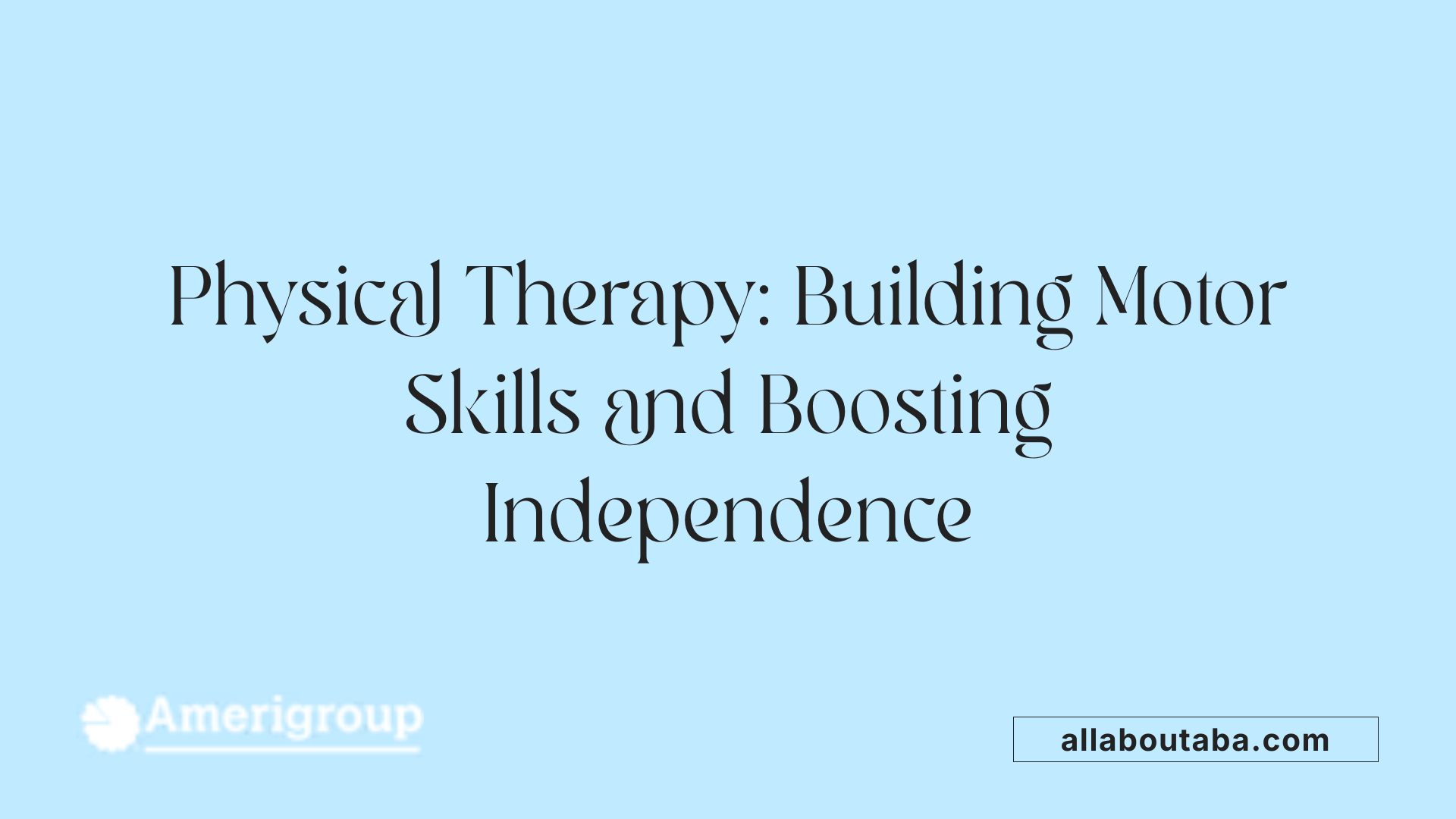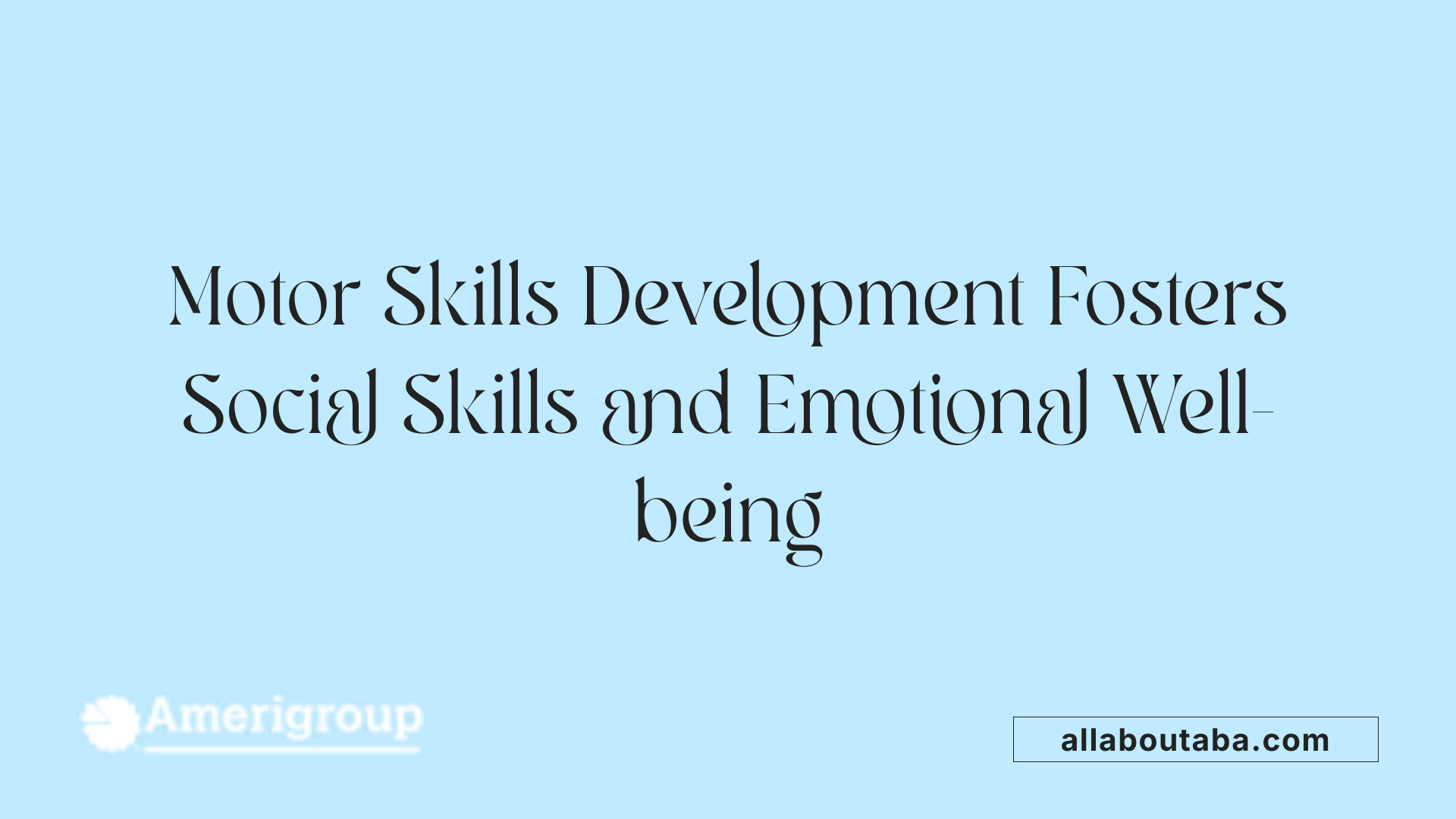Understanding Autism and Motor Challenges
Children with Autism Spectrum Disorder (ASD) often face significant motor development challenges, including difficulties with balance, coordination, and motor planning. Addressing these issues is crucial not only for physical independence but also for enhancing social communication and participation in daily activities. This article explores the vital role physical therapists play in supporting motor skills development among children with autism, complementing behavioral therapies like Applied Behavior Analysis (ABA) to foster overall growth and quality of life.
Common Motor Challenges in Children with Autism and the Importance of Early Intervention

What are the motor difficulties children with autism face?
Children with autism spectrum disorder (ASD) frequently experience motor development deficits early in life. These include poor balance, coordination, motor planning difficulties, body control issues, and low muscle tone (hypotonia). Such challenges can interfere with everyday movements and impede children's ability to explore their environment effectively. These motor skill deficits often disrupt participation in social interactions and limit engagement with peers, contributing to challenges in communication and relational understanding.
Why is improving motor skills in children with autism important?
Motor skill development plays a crucial role in supporting a child’s independence and cognitive growth. Skills such as sitting independently, object exploration, and locomotion not only enable physical activity but also enhance social interaction and communication. When motor skills improve, children are better equipped to participate in play, school activities, and peer engagement, which are essential for emotional and social development.
Interconnection between motor skills and participation in social interactions and communication
Research shows that delays in motor milestones correlate with reduced social participation in children with ASD. As motor capabilities improve, so does the child's ability to imitate movements, engage rhythmically, and partake in physical activities—factors that foster social behavior and overall participation. These connections highlight how motor and social development are intertwined.
Importance of targeted interventions to address these challenges
Early identification of motor difficulties enables the implementation of targeted interventions, such as physical therapy and motor skill training programs. Interventions which focus on enhancing balance, coordination, strength, and motor planning can significantly improve both motor function and social communication. Choosing approaches that are engaging and adaptable to various environments helps children generalize learned skills, promoting better retention and practical application in everyday life.
The Role and Approach of Physical Therapy in Autism Motor Skills Support

How Does Physical Therapy Help Children with Autism?
Physical therapy plays a crucial role in supporting children with autism by targeting improvement in gross motor skills, balance, coordination, posture, and muscular strength. Therapists create individualized and structured programs designed to address specific movement challenges unique to each child.
Therapy sessions incorporate fun, play-based activities to encourage participation and engagement. These activities are carefully adapted to the child’s environment, whether it be home, school, or outpatient clinics, ensuring therapy is accessible and supportive of everyday routines.
What Assessment Techniques Are Used by Physical Therapists?
Physical therapists perform thorough assessments of motor skills and sensory processing abilities to develop personalized intervention strategies. They use standardized motor development measures and observe the child’s functional mobility, balance, coordination, and muscle strength.
These evaluations enable therapists to identify particular areas of delay or difficulty, guiding the selection of appropriate therapeutic techniques and goals.
What Are the Core Components of Individualized Treatment Plans?
Treatment plans focus on improving motor skills such as gross motor function, balance, coordination, strength, and functional mobility. These plans are typically dynamic and evolve based on ongoing assessments and progress.
Key components include:
- Strength training exercises
- Balance and coordination activities
- Functional mobility practice (e.g., stair navigation)
- Posture improvement strategies
How Are Therapy Sessions Structured and Delivered?
Sessions tend to last 20 to 30 minutes for younger children, potentially extending as children grow. Therapists utilize child-friendly tools like therapy balls, balance beams, and interactive games. Play-based, structured interventions promote motor learning and maintain motivation through enjoyable activities such as jumping, climbing, and dancing.
Settings for delivery include the:
- Home: Integrating therapy into natural routines
- School: Supporting participation in educational activities
- Outpatient clinics: Providing specialized equipment and focused treatment
How Is Sensory Processing Integrated into Motor Control Strategies?
Physical therapists often incorporate sensory integration techniques alongside motor interventions to help children better regulate sensory input, which is common in autism spectrum disorder. Techniques such as exposure and regulation strategies support children in overcoming hypersensitivity or hyposensitivity.
This multisystem approach promotes improved motor control and enhances participation in social and physical activities.
By combining individualized assessment, customized plans, engaging methodologies, and sensory processing strategies, physical therapy effectively supports motor skill development in children with autism, fostering independence and enhancing quality of life.
Collaborative and Multisystem Support Enhancing Motor Intervention Outcomes

Who Provides Therapy for Autism?
Therapy for autism involves a multidisciplinary team including pediatric physical therapists, occupational therapists, speech-language pathologists, and Board Certified Behavior Analysts (BCBAs). Physical therapists specialized in autism design individualized programs targeting motor and coordination challenges, while BCBAs focus on behavioral interventions. Collaboration with families, educators, and peers ensures that therapy is both effective and accessible across contexts.
How Are Physical Therapy Interventions Integrated with Other Therapies?
Physical therapy works synergistically with behavioral and communication therapies to address the full spectrum of a child's needs. By improving motor skills, physical therapy facilitates greater social participation and engagement, which are critical for progress in communication and behavior-focused interventions. Coordinated planning among therapists promotes consistent goals and comprehensive support for the child.
Settings and Collaborative Support
Motor skill interventions occur in diverse settings such as schools, rehabilitation centers, community programs, and homes. The involvement of families, teachers, and peers as active participants supports skill generalization and encourages continuous practice beyond therapy sessions. This multisystem cooperation enhances the child’s engagement and motivation.
Effectiveness and Retention of Motor Interventions
Studies show that relatively short intervention durations, typically 10 to 12 weeks, can produce significant improvements in motor skills. These gains have been found to be retained over time and transferred to real-world activities. Notably, children with social skill deficits demonstrate greater progress and better generalization following motor interventions.
Promoting Generalization to Real-Life Contexts
Multisystem support helps embed motor skill development into daily routines and social environments. Through collaborative efforts, children with ASD successfully apply improved motor abilities in functional tasks at school and in the community, leading to enhanced participation and quality of life.
| Aspect | Description | Impact |
|---|---|---|
| Therapy Providers | Physical therapists, occupational therapists, speech-language pathologists, BCBAs | Comprehensive care addressing motor, behavioral, and communication needs |
| Collaborative Settings | Schools, rehab centers, community settings, homes | Enhances accessibility and real-life skill application |
| Intervention Duration & Effects | Short-term (8–12 weeks) programs effective with retained outcomes | Efficient therapy leading to lasting motor skill improvements |
| Family & Peer Involvement | Active participation by caregivers, educators, and peers | Greater motivation, generalization, and social engagement |
| Integration with Other Therapies | Coordination among therapists for aligned goals | Holistic development across domains |
Benefits of Motor Skill Interventions on Social and Emotional Development

How does physical therapy support social and emotional development in children with autism?
Physical therapy plays a crucial role in supporting social and emotional development for children with autism by improving their motor skills. As children develop better coordination, balance, and muscle strength, they can engage more fully in social activities. This reduces frustration that often arises from movement difficulties and allows for increased participation with peers.
Therapy sessions are designed to be interactive and fun, incorporating games, music, and peer involvement. These activities offer opportunities for children to express emotions, understand social rules, and connect with others in a supportive environment.
What is the impact of motor skill interventions on participation?
Motor skill interventions have a significant positive effect on children's participation in school, community, and recreational settings. By enhancing abilities such as gross and fine motor skills, children can more easily take part in writing, arts, physical education, and play.
This increased involvement promotes not only physical competence but also boosts confidence, social interaction, and academic engagement, which are vital for overall development.
How are participation and social behaviors measured and guided?
Assessment tools like the Canadian Occupational Performance Measure (COPM), Children's Assessment of Participation and Enjoyment (CAPE), and Miller Function and Participation Scales (M-FUN) are used to evaluate children's levels of participation and enjoyment in activities. These instruments help therapists tailor interventions that focus on engagement, independence, and social interaction.
What role do motor interventions such as rhythmic movement, motor imitation, and physical activity play?
Specific motor-based activities, including rhythmic movement and motor imitation, actively support social behaviors by encouraging children to interact and respond to others. Regular physical activity promotes not only motor competence but also emotional regulation and peer engagement.
The dynamic, social nature of these interventions builds foundational skills necessary for effective communication and participation within groups, further benefiting emotional health.
Integrating Motor Support Into Daily Life: Practical Tips for Families and Caregivers
How can families support motor skill development at home?
Families play a crucial role in reinforcing motor skill growth outside therapy sessions. By weaving physical therapy exercises into everyday routines, such as during dressing, feeding, or playtime, children can practice movements in familiar settings. Using engaging, child-preferred activities—like games or songs linked to their interests—helps make exercises fun and motivates participation.
Praise and small rewards encourage effort and consistency, creating positive associations with motor tasks. Collaborating closely with physical therapists allows families to understand therapy goals and apply recommended strategies effectively, ensuring smoother transfer of skills to real-world environments.
Using play, rewards, and child interests to motivate participation
Therapists often recommend playful activities including jumping, climbing, or dancing, which naturally promote motor development. Incorporating enjoyable challenges linked to a child's preferences helps maintain enthusiasm and willingness to engage. Reinforcement through rewards, verbal encouragement, and social praise supports sustained effort and boosts confidence.
Selecting qualified physical therapists experienced with autism
Choosing the right therapist is vital. Professionals should possess specialized pediatric training, along with experience working with children on the autism spectrum. This includes understanding sensory processing differences, communication needs, and behavioral strategies suited to autistic children. Therapists skilled in creating flexible, engaging approaches tailor interventions effectively to each child's abilities and interests.
Tailoring therapy frequency and goals collaboratively with families and professionals
Therapy plans are individualized and shaped through ongoing collaboration between families and therapists. Frequency and session length vary, often beginning with short 20- to 30-minute sessions that may extend as the child grows. Goals address specific difficulties in coordination, balance, strength, and functional mobility, reflecting both family priorities and clinical assessments.
Benefits of short-term and ongoing intervention programs
Studies show that even relatively short-term motor interventions—typically lasting 10 to 12 weeks—can produce meaningful improvements in motor skills. Continued or repeated programs support lasting skill retention and promote generalization to daily activities. Integrating physical therapy within varied environments such as home, school, or community settings, combined with family support, amplifies the intervention's effectiveness and positive impact on quality of life.
Enhancing Lives Through Physical Therapy and Collaborative Care
Physical therapy plays an indispensable role in supporting children with autism in overcoming motor skill challenges that affect their independence and social participation. Through individualized, playful, and evidence-based interventions, physical therapists address core physical difficulties such as balance, coordination, and strength while also facilitating social and emotional growth. When integrated with behavioral therapies like ABA and supported by collaborative multidisciplinary teams and families, physical therapy contributes significantly to improving quality of life for children with autism. Early intervention and ongoing cooperation among professionals and caregivers ensure children have the best opportunities to reach their full potential across multiple domains.
References
- Effects of Motor Skills and Physical Activity Interventions on ...
- The Role of the Pediatric Physical Therapist for Childen on the ...
- How Does Physical Therapy Benefit Children With Autism?
- The Interdependence of Motor and Social Skill Development
- Physical Therapy for Autism: What Parents Need to Know
- Physical Therapy Could Help Enhance Skills in Children ...
- How Physical Therapy Supports Children with Autism







